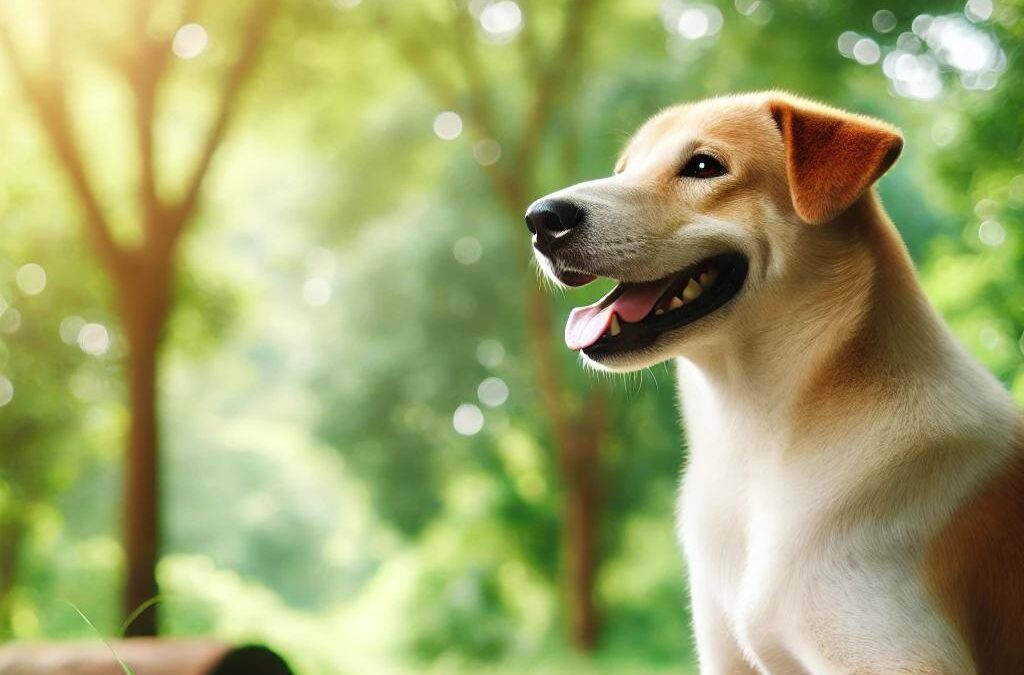
經過 TCMVET | 2024 年 10 月 14 日 | 狗癌症和腫瘤
狗的耳腫瘤可以發生在耳朵的任何部位,從外耳廓到耳道和內耳的較深部分。有些耳部腫瘤是良性的,生長緩慢而不會擴散,而有些則是惡性的,需要立即就醫。了解耳部腫瘤的跡象並知道要注意什麼可以幫助您及早發現任何問題並提高您的狗成功治療的機會。
什麼是耳腫瘤?
耳腫瘤是指狗狗耳朵內或周圍出現的異常生長。並非所有腫瘤都是癌性的,但仍應由獸醫密切監測和評估。耳癌是一種特殊類型的耳腫瘤,是惡性的,這意味著它會急劇生長並可能擴散到身體的其他部位。耳部腫瘤會影響耳廓(外耳)、耳道、中耳,甚至內耳。
耳腫瘤發生的常見部位
- 耳廓(外耳)
耳廓或耳外瓣更容易受到耳腫瘤的影響,尤其是耳朵下垂或耳朵長期暴露在陽光下的狗。在梳理或撫摸過程中,這裡的腫瘤通常更容易被發現。
- 外耳道
外耳道是通往耳朵的通道,包含垂直部分和水平部分。這裡的腫瘤可能會引起搖頭、抓傷或明顯腫脹等症狀。
- 中耳
中耳位於鼓膜後面,包含傳輸聲音的小骨頭。該區域的腫瘤會影響狗的聽力和平衡,導致更嚴重的症狀,如頭部傾斜或行走困難。
- 內耳
內耳控制聽力和平衡。雖然該區域的腫瘤很少見,但如果發生,可能會導致嚴重的平衡問題和神經系統症狀。
狗耳腫瘤的徵兆和症狀
對於寵物主人來說,儘早辨識耳腫瘤的跡象非常重要。常見症狀包括:
- 搖頭或抓撓:持續搖頭或用爪子抓耳朵可能表示腫瘤引起的刺激。
- 分泌物或惡臭:腫瘤可能導致感染,導致耳朵排出惡臭的分泌物。
- 可見腫塊或腫脹:可以看到或感覺到耳廓上或耳道附近的生長物,尤其是在梳理毛髮時。
- 聽力損失:影響耳道或中耳的腫瘤會阻擋聲音,導致部分或完全聽力喪失。
- 平衡問題:如果腫瘤影響內耳,您的狗可能會遇到平衡問題,例如搖晃或跌倒。
診斷狗的耳腫瘤
如果您發現狗的耳朵有任何異常症狀,請務必盡快諮詢獸醫。您的獸醫可能會進行身體檢查、影像學檢查(例如 X 光或 CT 掃描)和活檢,以確定腫瘤是良性還是惡性。早期診斷有助於確保提供最佳的治療方案。
治療方案
耳腫瘤的治療取決於腫瘤是良性還是惡性:
- 良性腫瘤 如果它們引起不適或阻塞耳道,通常可以透過手術切除。
- 惡性腫瘤 可能需要更積極的治療,包括手術、放射治療或化療。在嚴重的情況下,可能需要部分或全部切除受影響的耳朵以防止癌症擴散。
狗的耳部腫瘤,無論是良性或惡性,都不應被忽視。定期檢查狗狗的耳朵是否有腫塊、腫脹或異常症狀。如果您發現您的狗的行為或耳朵健康有任何變化,請聯絡您的獸醫進行徹底評估。早期發現是改善預後的關鍵,特別是對於惡性耳腫瘤。

經過 TCMVET | 2024 年 10 月 14 日 | 狗癌症和腫瘤
獸醫訓練有素,能夠發現您的狗或貓的異常情況,定期的獸醫檢查對於發現癌症等嚴重的健康問題至關重要。然而,大多數寵物每年只去看獸醫一次或兩次,在監測方面留下了空白。作為寵物主人,您可以透過進行例行的家庭檢查來儘早發現潛在的癌症跡象,從而在寵物的健康方面發揮積極作用。
寵物在家健康檢查的重要性
雖然每年一次的獸醫檢查至關重要,但您最有能力注意到寵物健康狀況的細微變化。透過將每月的家庭健康檢查納入您的日常工作中,您可以在腫塊、體重變化和其他疾病跡象變得更嚴重之前發現它們。早期發現可以導致早期治療,讓您的寵物有更好的機會獲得正面的結果。
如何檢查腫塊和腫塊
在家檢查期間可以做的最簡單和最重要的事情之一就是感覺是否有腫塊和顛簸。慢慢地用手撫摸寵物的整個身體,特別注意胸部、腹部和四肢。不要忘記檢查腳趾之間和腋下。對於雌性寵物,請務必檢查乳頭和周圍組織是否有任何腫塊或腫脹,因為乳腺腫瘤在狗和貓中很常見。
監測體重和身體狀況
體重減輕或增加可能是寵物患癌症的微妙跡象。用手撫摸寵物的胸腔,感受身體狀況是否有任何異常變化。您應該能夠感覺到寵物的肋骨,而無需用力按壓,但它們不應該過於突出。為了更準確地監測體重趨勢,請每月為您的寵物稱重並記錄日誌。這使您能夠發現原本可能被忽視的逐漸變化。
口腔健康檢查
寵物的口腔可以透露很多有關其整體健康狀況的資訊。定期檢查寵物的口腔內部,檢查他們的牙齒、牙齦和舌頭。抬起嘴唇,檢查牙齦線和牙齒是否有任何異常生長、變色或出血。為了使這個過程更容易,請提供零食並讓您的寵物舔它,同時檢查舌頭的頂部和底部是否有任何異常腫塊或潰瘍。
寵物主人在癌症檢測中的作用
您比任何人都更了解您的寵物,透過每月進行一次家庭健康檢查,您可以增加及早發現任何微妙癌症跡象的可能性。如果您發現任何異常情況,例如新腫塊、不明原因的體重減輕或異常行為,請安排與您的獸醫進行進一步評估。
定期的居家健康檢查可以成為檢測寵物癌症早期跡象的強大工具。透過保持積極主動並密切監測寵物的健康狀況,您可以在潛在問題惡化之前發現它們。除了每年一次的獸醫檢查外,這些例行檢查還為您的寵物提供了保持健康、幸福生活的最佳機會。

經過 TCMVET | 2024 年 10 月 14 日 | 狗癌症和腫瘤
癌症是寵物死亡的主要原因,但許多早期預警訊號很容易被忽略。與體重減輕或大腫塊等明顯症狀不同,寵物父母往往會忽略細微的症狀,這可能會延誤診斷和治療。了解這些微妙的跡象可能會對及早發現癌症和改善寵物的預後產生重要影響。
寵物常見但被忽視的癌症跡象
- 飲食習慣的改變
如果您的寵物突然變得挑食或食慾急劇變化,這可能是癌症的早期徵兆。影響胃腸系統、口腔或喉嚨的腫瘤可能會導致不適或進食困難。即使您的寵物似乎只喜歡某些食物而不是其他食物,密切監控它們的飲食模式也很重要。
- 嗜睡和不明原因的疲勞
突然缺乏精力或不願進行常規活動可能是癌症的早期徵兆。雖然許多寵物主人可能將其歸因於衰老,但持續疲勞或活動量減少可能表示潛在的健康問題,包括癌症。
- 異常腫塊或腫脹
並非所有腫塊都很容易被注意到,特別是對於毛皮厚的寵物。皮下或難以觸及的區域(例如腳趾之間或尾巴上)出現的腫脹可能會被忽略。定期檢查寵物的身體是否有異常生長至關重要。
- 體重減輕或增加
意外的體重減輕可能是寵物罹患癌症的最明顯跡象之一。然而,有些寵物家長可能會忽略這個症狀,尤其是體重變化不太明顯的長毛寵物。另一方面,某些腫瘤會導致液體滯留,導致體重突然增加。
- 持續咳嗽或呼吸困難
慢性咳嗽,尤其是似乎與呼吸道感染無關的咳嗽,可能是癌症(尤其是肺癌)的微妙徵兆。如果您的寵物出現呼吸困難或乾咳,請務必進行獸醫評估。
- 改變如廁習慣
消化系統或膀胱的癌症會導致寵物的如廁習慣改變。檢查是否有持續性腹瀉、便秘、血便或排尿困難。這些變化可能很微妙,但它們可能表明更嚴重的潛在狀況。
- 口臭或口腔不適
雖然寵物的口臭通常與牙齒疾病有關,但它也可能是口腔腫瘤的徵兆。如果您的寵物出現口腔疼痛、流口水過多或牙齦出血的跡象,則值得進一步檢查以排除癌症的可能性。
- 無法癒合的傷口
如果您的寵物有需要很長時間才能癒合的瘡或傷口,則可能是癌症的徵兆。持續的傷口或感染可能是疾病引起的免疫系統減弱的結果。
- 行為改變
如果你平常友善和社交的寵物變得孤僻、易怒或具有攻擊性,這可能是不適或疼痛的跡象。行為變化可能是內部問題(包括癌症)的早期指標。
為什麼早期檢測很重要
及早發現寵物癌症可以顯著改善治療選擇和結果。定期檢查和定期監測寵物的健康狀況是在疾病進展之前發現潛在警訊的關鍵。如果您發現您的寵物有任何這些細微的變化,請務必諮詢您的獸醫以進行進一步的檢查和測試。
許多寵物父母忽略了寵物癌症的微妙跡象,通常將其歸因於衰老或輕微的健康問題。透過保持警惕並關注行為、食慾或身體狀況的微小變化,您可以幫助確保癌症的早期發現和治療,從而有可能挽救寵物的生命。

經過 TCMVET | 2024 年 10 月 14 日 | 狗癌症和腫瘤
在例行檢查時,狗的爪子經常被忽視,但它們可能是各種類型的生長和腫瘤的部位。狗爪子上的腫瘤或異常腫塊可能會引起關注,並應由獸醫進行評估,以確保寵物的健康。定期檢查狗的爪子可以幫助及早發現這些問題,防止不適和潛在的併發症。
狗爪子上常見的腫瘤類型
狗的爪子上可能會出現幾種類型的增生,從良性到惡性。這些包括:
- 黑色素瘤:黑色素瘤是較嚴重的腫瘤之一,通常呈現黑色,並且經常在甲床周圍發現。這些腫瘤可以擴散到身體的其他部位,因此早期檢測至關重要。
- 肥大細胞腫瘤:這些生長物可以是粉紅色或紅色,並且可能出現潰爛或生瘡。肥大細胞瘤的嚴重程度各不相同,從良性到高度侵襲性,因此任何新的腫塊都應該由獸醫檢查。
- 鱗狀細胞癌:這種類型的癌症通常會影響腳趾之間的區域,可能類似於疣或結痂。儘管這些腫瘤往往生長緩慢,但它們仍然可以侵入附近的組織,因此及時治療很重要。
- 良性增生:並非狗爪子上的所有增生都是癌性的。疣或囊腫相對常見,通常無害,但仍應進行檢查以排除更嚴重的問題。
狗爪子上需要注意的跡象
如果您定期檢查狗的爪子,您將能夠更好地及早發現變化。以下一些跡象可能表明您的狗的爪子上有腫瘤或其他生長:
- 腳趾間腫脹或腫塊
- 指甲異常,例如變色或變形
- 觸摸爪子時感到疼痛或敏感
- 跛行或不願行走
- 可見的潰瘍、出血或分泌物
為什麼獸醫的關注至關重要
雖然有些腫塊看起來無害,但為了狗狗的健康,最好還是小心一點。獸醫可以進行活檢或其他測試來確定生長物是良性還是惡性。早期檢測和診斷可以帶來更有效的治療選擇,有可能使您的狗免受不必要的疼痛或更嚴重的健康風險。
治療方案
爪腫瘤的治療方法可能因診斷而異。對於良性生長,您的獸醫可能會建議監測或簡單移除。另一方面,惡性腫瘤可能需要更積極的治療,例如手術、化療或放射治療。在某些情況下,如果腫瘤已經擴散或造成嚴重損害,可能會考慮截肢受影響區域以防止進一步的併發症。
定期檢查狗的爪子是保持寵物健康和舒適的簡單而有效的方法。如果您發現任何新的腫塊或異常生長,請務必讓獸醫進行評估。早期發現和治療可以改善結果,並有助於確保您的狗享受長壽、幸福的生活。

經過 TCMVET | 2024 年 10 月 13 日 | 狗癌症和腫瘤
狗的喉嚨腫瘤會影響喉部、咽部和扁桃體等區域,會對狗狗的進食、呼吸和發聲能力產生重大影響。無論是良性還是惡性,這些腫瘤都需要早期識別並及時進行獸醫護理,以控制症狀並改善狗的生活品質。在本文中,我們將討論狗咽喉腫瘤的早期症狀、治療選擇,以及自然護理方法如何補充傳統療法以實現最佳健康。
什麼是狗的喉嚨腫瘤?
喉嚨腫瘤可以發生在狗喉嚨的不同部位,包括喉部(喉部)、咽部(上喉)和扁桃體。它們可能是良性(非癌性)或惡性(癌性),其中惡性腫瘤由於其擴散的潛力而構成更大的威脅。
狗的常見咽喉腫瘤類型包括:
- 喉腫瘤:這些腫瘤生長在聲帶或周圍組織上,可能會影響狗狗吠叫或發聲的能力。
- 咽部腫瘤:這些腫瘤位於上喉嚨,會阻塞呼吸道,導致呼吸困難。
- 扁桃體腫瘤:這些腫瘤通常是惡性的,可導致吞嚥問題、過度流口水和不適。
狗喉嚨腫瘤的早期症狀
咽喉腫瘤的症狀可能因腫瘤的位置和大小而異。早期發現至關重要,因此請注意以下警告信號:
- Voice Changes
如果您發現您的狗的吠叫或發聲聽起來不同(嘶啞、安靜或緊張),這可能是喉部腫瘤影響聲帶的徵兆。
- 咳嗽或作嘔
持續咳嗽或作嘔,尤其是在進食期間或進食後,可能表示咽部或扁桃體腫瘤阻塞了氣道或刺激喉嚨。
- 吞嚥困難
患有喉嚨腫瘤的狗可能難以吞嚥食物或水,常常導致流口水、窒息或反流。這在扁桃體腫瘤中尤其常見。
- 呼吸困難
喉嚨腫瘤會阻塞氣道,導致呼吸嘈雜或困難。這是一種嚴重的症狀,需要立即就醫。
- 腫塊或腫脹
在某些情況下,您可能會感覺到或看到狗的喉嚨區域周圍有腫塊,或者當您觸摸狗的脖子時,您的狗可能會做出疼痛反應。
狗喉嚨腫瘤的治療選擇
治療方法取決於腫瘤的類型、大小和位置,以及良性或惡性。常見的治療方法包括:
- 手術
對於可觸及的腫瘤,手術通常是第一選擇。切除腫瘤可以緩解症狀,並且在許多情況下可以治愈,特別是當腫瘤是良性或局限性時。
- 放射治療
放射線用於治療無法透過手術完全切除的惡性腫瘤。它有助於縮小腫瘤並減輕呼吸或吞嚥困難等症狀。
- 化療
對於患有轉移性(擴散)或無法手術的腫瘤的狗,化療可用於減緩腫瘤生長並延長狗的生命。
- 安寧療護
對於晚期癌症,安寧療護可以幫助控制疼痛和不適。藥物、飲食改變和支持性護理可以讓你的狗更舒服。
支持您的狗的健康的自然護理選擇
雖然傳統治療很重要,但自然護理選擇可以幫助您的狗康復和整體健康。在採用自然療法之前,請務必諮詢您的獸醫,尤其是當您的狗正在接受治療時。
- 用於發炎和治療的草藥補充劑
某些草藥可以幫助減少炎症,支持免疫系統,並促進患有喉嚨腫瘤的狗的癒合。
- 薑黃:薑黃是一種強大的抗發炎草藥,可以幫助控制狗的疼痛和腫脹。它通常用於支持患有癌症或慢性發炎的狗。
- 靈芝蘑菇:靈芝以其增強免疫力和抗癌特性而聞名。它們可能有助於減緩腫瘤生長並改善整體健康。
- 甘草:甘草根具有舒緩功效,有助於減少喉嚨刺激和炎症,尤其是有呼吸道症狀的狗。
- 飲食調整
在治療喉嚨腫瘤時,確保您的狗獲得適當的營養至關重要。柔軟、易吞嚥的食物有助於防止用餐時的不適。
- 濕糧:改用濕糧或混合糧可以讓吞嚥困難的狗狗更容易進食。您也可以潤濕乾燥的食物,使其更可口。
- 骨湯:骨頭湯營養豐富且易於食用,可為難以進食固體食物的狗狗提供額外的水分和營養。
- 保濕和舒適
全天提供淡水,確保您的狗保持水分充足。有些狗可能會受益於使用升高的碗以使吞嚥更容易。讓您的狗保持冷靜和無壓力也很重要,因為壓力會加劇呼吸困難。
- 芳香療法放鬆身心
芳香療法可以幫助安撫焦慮的狗,尤其是那些因喉嚨腫瘤而感到不適的狗。薰衣草或洋甘菊等精油(用於擴香器)可以促進放鬆和平和感。
狗的喉嚨腫瘤需要早期診斷和治療,以改善寵物的生活品質。透過識別症狀並及時尋求獸醫護理,您可以在病情惡化之前解決問題。將傳統療法與自然護理方法(例如草藥補充劑和飲食調整)相結合,可以幫助支持您的狗在康復期間的健康。在實施任何新的治療方法之前,請務必諮詢您的獸醫,以確保您的狗獲得最佳結果。

經過 TCMVET | 2024 年 10 月 13 日 | 狗癌症和腫瘤
狗的腫瘤,特別是肥大細胞瘤,可能會變大、潰爛和破裂。這種破裂不僅讓狗和它們的主人都感到痛苦,而且由於開放性傷口而存在嚴重的感染風險。立即就醫對於預防併發症至關重要。除了傳統的獸醫治療外,傳統中醫 (TCM) 還提供自然療法,可支持癒合過程、減少發炎並改善狗的整體健康狀況。在這篇文章中,我們將討論腫瘤破裂的原因、立即護理的步驟以及中藥如何幫助復原。
為什麼狗的腫瘤會突然爆發?
狗的肥大細胞瘤、鱗狀細胞癌和其他癌性生長等腫瘤通常具有脆弱的血管。隨著時間的推移,隨著腫瘤的增加及其表面潰瘍,破裂的風險也會增加。導致腫瘤破裂的關鍵因素包括:
- 創傷或壓力
狗狗可能會不小心抓傷、碰撞或摩擦腫瘤,導致腫瘤破裂。
- 內壓
隨著腫瘤的生長,它們會對周圍的組織和血管施加壓力,導致它們破裂。
- 自然組織分解
腫瘤可能會生長超過其血液供應,導致組織死亡(壞死)和潰瘍。這會削弱腫瘤的結構並導致其破裂。
突發腫瘤的立即護理
破裂的腫瘤需要迅速治療,以防止感染和進一步的併發症。您可以執行以下操作:
- 清潔該區域
用無菌鹽水或清水輕輕清潔受影響的區域,以去除碎屑和血液。避免使用酒精或過氧化氫,因為它們會損壞組織。
- 控制出血
使用無菌紗布或乾淨的布輕輕按壓以止血。如果幾分鐘後出血仍未停止,請立即聯絡您的獸醫。
- 包紮傷口
清潔傷口後,用乾淨的不沾繃帶覆蓋,以保護該區域免受污垢和細菌的侵害。
- 拜訪獸醫
腫瘤破裂需要專業的獸醫護理。您的獸醫可能會開抗生素來預防感染、緩解疼痛,並可能建議手術切除腫瘤。
中醫 (TCM) 如何提供協助
中醫提供整體治療,可以補充患有癌症的狗的傳統獸醫護理。眾所周知,中草藥可以促進癒合、減少發炎和支持免疫系統,這對從爆裂腫瘤中恢復的狗特別有益。以下是一些常用的草藥:
- 金銀花(金銀花)
金銀花具有很強的抗發炎和抗菌特性。它在中醫中用於清除體內的熱量和毒素,這有助於降低開放性傷口的狗感染的風險。
- 川芎
四川獨活草以其促進血液循環和緩解疼痛的能力而聞名。這有助於減輕不適並防止腫瘤部位周圍的血液停滯。
- 玄參(玄參)
玄參能有效減少腫塊和腫瘤。它的清涼特性有助於減少炎症,並有助於癒合開放性傷口,這對於患有潰瘍或爆裂腫瘤的狗特別有用。
- 黃耆(黃耆)
黃耆用於增強免疫系統並提高整體活力。它可以支持身體的自然防禦,幫助您的狗抵抗感染並更快地康復。
預防未來的腫瘤破裂
雖然可能無法總是防止腫瘤破裂,但您可以採取一些步驟來最大程度地降低風險:
- 監測腫瘤
定期檢查狗的腫瘤是否有生長、潰瘍或其他變化的跡象。早期介入可以防止腫瘤達到破裂點。
- 減少體力活動
如果您的狗的腫瘤位於易受傷害的位置,請限制其體力活動以防止意外創傷。
- 保護腫瘤部位
如果腫瘤位於可能被碰撞或抓傷的區域,您的獸醫可能會建議用保護性繃帶覆蓋該部位。
- 考慮草藥支持
除了常規護理之外,上述中草藥還可以透過促進癒合和減少發炎來幫助降低進一步併發症的風險。
處理您的狗的爆裂腫瘤是一種壓力很大的經歷,但透過及時的獸醫護理和中醫的支持,您可以幫助您的狗康復並保持其生活品質。金銀花、四川獨活和黃耆等中草藥提供了減少發炎、支持癒合和增強狗的免疫系統的天然方法,是對傳統癌症治療的補充。在將任何草藥治療納入您的狗的護理計劃之前,請務必諮詢您的獸醫,以確保安全性和有效性。






